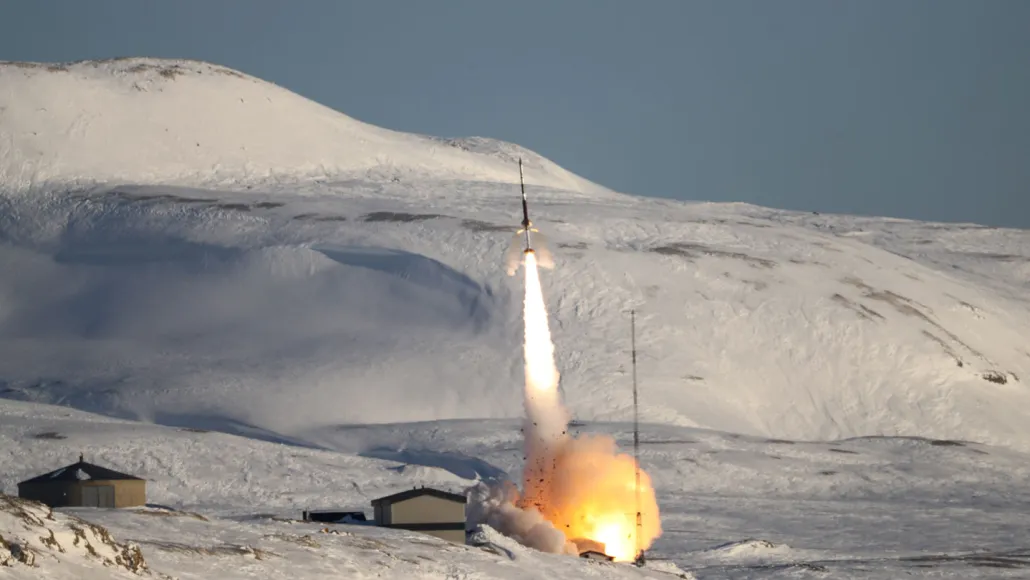
By Lisa Grossman September 13, 2024 at 9:00 am
Collected at: https://www.sciencenews.org/article/electric-field-in-earths-atmosphere
For the first time, scientists have measured a long-sought global electric field in the Earth’s atmosphere. This field, called the ambipolar electric field, was predicted to exist decades ago but never detected, until now.
“That’s the big whoop,” says atmospheric scientist Glyn Collinson of NASA’s Goddard Space Flight Center in Greenbelt, Md. “It’s a whole frickin’ new planetary energy field that’s never been measured before!”
The field is weak, only 0.55 volts — about as strong as a watch battery, Collinson says. But that’s strong enough to control the shape and evolution of the upper atmosphere, features that could have implications for the suitability of our planet for life.
“It’s fundamental to the DNA of our planet,” says Collinson, who reported the new measurement in Nature August 28.
The existence of the ambipolar electric field was first predicted in the 1960s, at the dawn of the space age. Early spacecraft flying over Earth’s poles detected a supersonic outflow of charged particles from the atmosphere, called the polar wind.
The most reasonable thing to explain that speedy wind would be an electric field in the atmosphere. The idea is that sunlight can kick electrons out of atoms in the upper atmosphere. Those negatively charged electrons are light and energetic enough that they want to float out into space. The positively charged oxygen ions left behind are heavier and want to sink down in Earth’s gravity.
But the atmosphere wants to remain electrically neutral, keeping an equal balance between electrons and ions. The electric field forms to keep the electrons tied to the ions and prevent them from escaping.
Once established, the field can act as a booster for lighter ions like hydrogen, giving them enough energy to break free of Earth’s gravity and zoom away as the polar wind. It can also pull heavier ions higher up in the atmosphere than they would otherwise reach, where other forces can strip them into space as well.
That was the hypothesis. But until recently, the technology to detect the field didn’t exist.
“It was genuinely thought impossible to do,” Collinson says. “[The field] so weak, it was just assumed you’ll never measure it.”
Collinson realized this measurement hadn’t been taken after he and his colleagues tried to measure a similar field on Venus. A search for a paper reporting the strength of Earth’s field for comparison came up empty.
“Turned out, funny story, it’s never been done,” he says. “We were like, ‘Game on!’”
Collinson and colleagues developed a new instrument called a photoelectron spectrometer specifically to detect the electric field. The team mounted the spectrometer on a rocket named Endurance, after the ship that carried Ernest Shackleton to explore the Antarctic in 1914.
Getting to the launchpad in Svalbard, Norway was a journey worthy of the rocket’s name. The team traveled by boat for 17 hours to get to the archipelago of Svalbard, located just a few hundred kilometers from the North Pole. Several members of the team fell ill with COVID-19 on the way. And the war between Russia and Ukraine had begun just a few months earlier.
“At the time, there was a certain amount of nervousness about firing off rockets,” Collinson says. “Polar bears were the least of it. We had war and plague.”
Two more days of blizzards kept Endurance grounded. When the rocket finally launched on May 11, 2022, it went straight up through the atmosphere to about 770 kilometers, measuring the energies of electrons every 10 seconds. The whole flight lasted 19 minutes. At the end, the rocket splashed into the Greenland Sea.
Endurance measured a change in electric potential of 0.55 volts between the altitudes of 248 kilometers and 768 kilometers — exactly enough to explain the polar wind on its own, without any other atmospheric effects.
The measurement is solid and exciting, says planetary scientist David Brain of the University of Colorado Boulder, who was not involved in the new work. But it’s only one data point from one rocket. “I think this result is a really great result that argues there should be more measurements like this,” he says.
Collinson agrees. He and his colleagues recently received NASA approval for a follow-up rocket — this time named Resolute, for an Arctic exploring ship that set sail in 1850.
Because the ambipolar electric field helps control how quickly a planet’s atmosphere escapes into space, it probably plays some role in making a planet hospitable to life, Collinson says. Scientists think that Mars used to be more like Earth, but lost much of its atmosphere to space over time (SN: 11/27/15). Venus may have once been much wetter than it is today, too (SN: 8/1/17).
Both of those planets also have ambipolar electric fields, but they may have been better off without them.
“If this process didn’t exist at Venus and Mars, then I think it’s possible Venus and Mars would have lost less oxygen,” and therefore less water, Brain says.
Earth’s ambipolar electric field helps kick its oxygen out into space, too. But Earth has one key advantage over Mars and Venus: a global magnetic field to guide charged particles around the planet. “The electric field is the engine that gets the particles moving,” Brain says. “The magnetic field is sort of the road that the particles move along.” Earth’s magnetic field means oxygen can escape only near the poles, rather than from any part of the atmosphere. That could help explain why Earth has kept its habitable atmosphere for so much longer than Venus or Mars.
“Fundamentally, what makes a planet habitable is going to be many things,” Collinson says. “But I think comparing these different energy fields across different planets is a way to answer the question, why is the Earth habitable? Why are we here?”

Leave a Reply